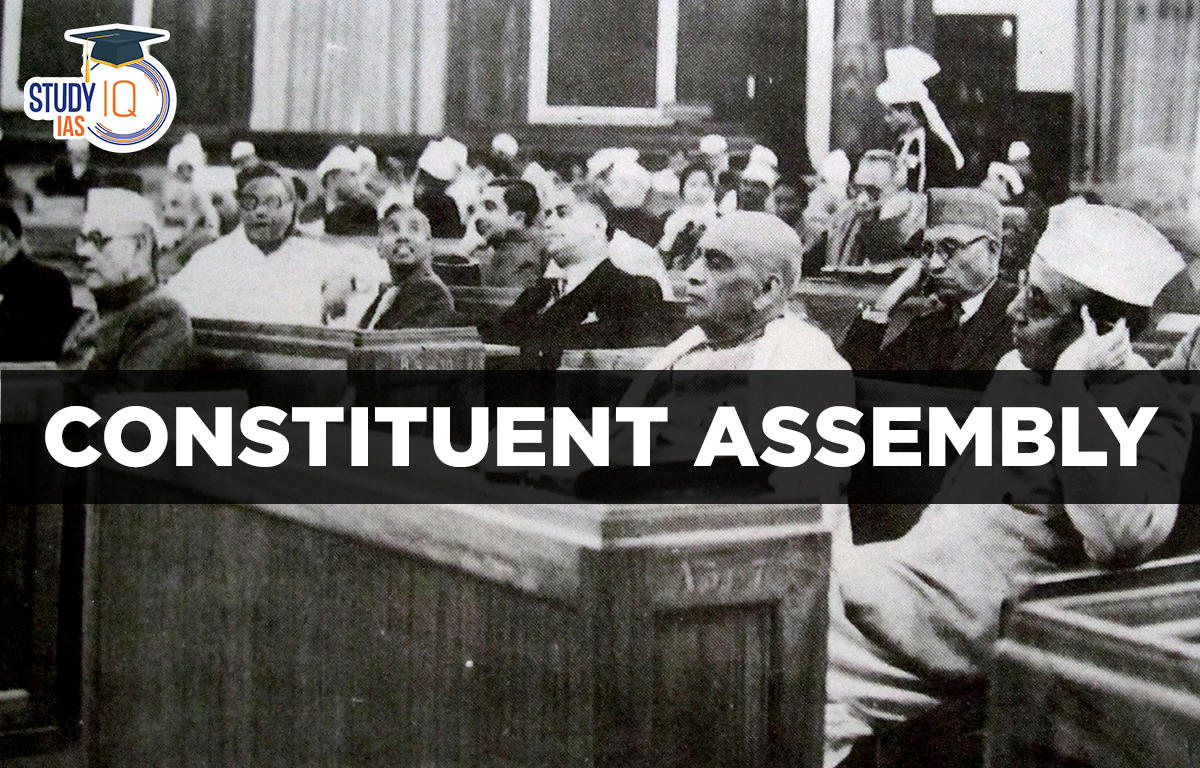Table of Contents
Constituent Assembly
A well-established fact is that the Constitution of India is the supreme law of the country and is the torchbearer of the basic political code, powers and duties of the government. Even the Parliament of not empowered to overpower the Constitution due to the supremacy of the Constitution over the Parliament and the fact that is framed by the Constituent Assembly headed by BR Ambedkar.
This famous quote of Dr. BR Ambedkar summarises the purpose of our battle for independence: “Our is a battle; Not for wealth, nor for power, Ours is battle; for freedom; For reclamation of human personality.”
Read More: Salient Features of Constitution of India
Constituent Assembly of India
The Constituent Assembly of India was a body that came together with the sole purpose of drafting the Constitution of India. The body is a sovereign entity partly elected and partly nominated.
It came into existence as per the provision of the Cabinet Mission (1946) hence, the composition of the constituent assembly was made on the line of cabinet mission. It is to be noted that although the constituent assembly members were not directly elected, they comprised the representative of all sections of society.
Indian Independence Act, 1947 made the constituent assembly fully sovereign as well as a legislative body. As a legislative body, it has two functions – framing the constitution and enactment of ordinary laws for India.
Read More: Preamble of Indian Constitution
Chairman of Constituent Assembly
The Assembly became the first Parliament of India which was chaired by Dr Rajendra Prasad for performing constituent functions and for the legislative functions it was chaired by GV Mavlankar it continued to till the constitution was made.
Read More: Important Articles of Indian Constitution
President of the Constituent Assembly
The first meeting of the constituent assembly was held on 9th December 1946, Dr. Sachchidananda Sinha was appointed as the temporary chairman of the Constituent Assembly meeting which was attended by 211 members. Later Dr Rajendra Prasad was elected as the President and H.C. Mukherjee and V.T. Krishnamachari were elected as the Vice-President.
Read More: Fundamental Rights of Indian Constitution
Working of The Constitutional Assembly
The working of the Constituent Assembly started with the historic ‘Objective Resolution’ presented by JL Nehru it laid down the fundamentals and the philosophy of the structure of the constitution. With a vision to maintain peace worldwide and ensure the welfare of mankind, the Objective Resolution proposed to keep intact the sovereignty and integrity of the nation.
The Assembly also helped in the adoption of- the national flag, national song, and national anthem on 22nd July 1947, and 24th January 1950, ratified the membership of India in the commonwealth (May 1949), also elected Dr. Rajendra Prasad as its first President.
Read More: Directive Principles of State Policy
Constituent Assembly Members
It consisted of a total of 389 members of which 292 members were elected from the Indian Provinces; 93 members from the Indian Princely States; 4 members from Chief Commissioners’ Provinces.
But the Mount Batten Plan of 1947 led to the partition of India which led to the formation of a separate constituent assembly for Pakistan resulting in the reduction of the member of the assembly to 299. Hence, the strength of Indian Provinces was reduced to 229 (from 296), and the Princely States to 70 (From 93).
Read More: Regulating Act of 1773
Speaker of Constituent Assembly
In 1946, GV Mavalankar was elected as the Speaker of the Central Legislative Assembly he remained in this post till August 15, 1947. With the dissolution of the Central Legislative Assembly, the Constituent Assembly was formed. GV Mavalankar became the speaker of the constituent assembly on November 17th, 1947.
The first Lok Sabha was constituted in 1952 and GV Mavalankar was elected as the first speaker of Lok Sabha.
Read More: Pitt’s India Act 1784
Constituent Assembly Adopted the Constitution of India
In the last meeting of the Assembly, on 24th January 1950 the members of the Constituent Assembly signed two copies of the document (one each in Hindi and English) and also “Jana Gana Mana” was adopted as the national anthem of India and the first two verses of “Vande Mataram” adopted as the national song.
The original Indian Constitution is handwritten with beautiful calligraphy, each page is decorated by artists from Shantiniketan including Beohar Rammanohar Sinha and Nandalal Bose.
After the efforts of 2 years, 11 months, and 18 days the constitution was adopted on 26th November 1949 that included a Preamble, 395 Articles, and 8 Schedules. On 26th November 1949, the motion of Draft Constitution was declared as passed after receiving the signature of the President and other members.
Among the 395 Articles of the Indian Constitution, some of the Articles from Articles 5 to 9, Articles 379, 380, 388, 392, and 393 came into force on 26th November 1949. The rest of the Article of the constitution came into force on 26th January 1950. With the commencement of the Indian Constitution, the Government of India Act 1935 and the Indian Independence Act 1947 ceased to exist. Presently, Indian Constitution has 448 Articles, 25 Parts, and 12 Schedules.
Note: India got its independence from the rule of the British in 1947, but became a republic in 1950. Although India was recognized as a separate nation, it was still following the British constitution and acknowledged the British Monarch. The reason behind adopting the republic in 1950 was to glorify the Indian National Congress declaration of 26th January 1930 as ‘Independence Day’, when the Declaration of Complete Independence was officially promulgated.





















 WhatsApp
WhatsApp